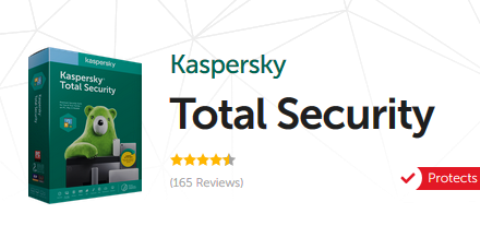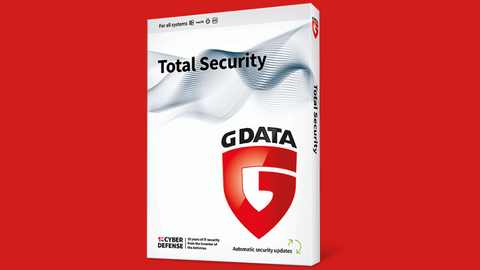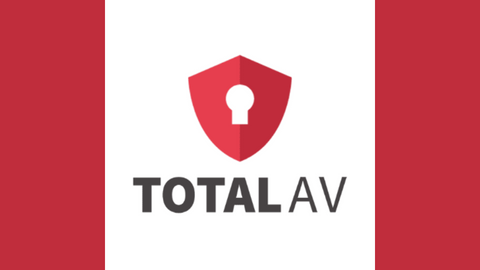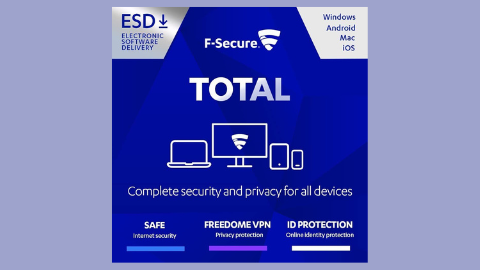To strike back at his attackers, Tobias Fromel, a malware victim, vengefully hacked back his attackers.
The digital world can be a dangerous place. In the age of ransomware, where malicious actors hold your precious data hostage, the feeling of helplessness can be overwhelming.
But one German programmer, Tobias Fromel (also known online as battleck), decided to take a stand – not just for himself, but for countless other victims.
This is how Fromel hacked back against his attackers, the Muhstik ransomware gang, and the complex ethical and legal questions it raises.
READ ALSO: Your Essential Ransomware Guide: Prevention, Detection, and Recovery
Table of Contents
Best Anti-Hacking Deals
Falling Victim to Muhstik Ransomware
The Muhstik ransomware emerged in late September 2019, targeting Network-attached storage (NAS) devices created by QNAP, a Taiwanese hardware vendor.
This malware, named after the “.Muhstik” extension it appended to encrypted files, preyed on users with weak passwords. Once infiltrated, Muhstik would lock down the victim’s data, demanding a ransom of 0.09 bitcoins (roughly $700) to regain access.
Tobias Fromel, unfortunately, became one of Muhstik’s victims. Faced with losing his data and pressured by the extortion attempt, he reluctantly paid the ransom. However, instead of succumbing to despair, Fromel channelled his anger into a daring counteroffensive.
Hacking Back: A Risky Gamble
Fueled by a desire for justice (and perhaps a touch of vengeance), Fromel set out to strike back at his attackers.
His technical expertise as a programmer came into play as he embarked on a mission to hack into the Muhstik control and command server. He managed to successfully breach their defences, gaining access to the criminals’ inner sanctum.
READ ALSO: What is the difference between a Virus, Malware, Adware, Trojans, and Ransomware?
Sharing the Spoils: Decryption for the Masses
Fromel’s actions weren’t driven solely by personal gain. He understood the plight of other Muhstik victims.
He released a critical piece of information to empower them and disrupt the attackers’ operations – nearly 3,000 decryption keys and free decryption software. This act of defiance provided a lifeline to countless individuals locked out of their data.
READ ALSO: 11 Most Common WordPress Attacks [MUST READ]
Legality vs. Morality: A Gray Area
While Fromel’s actions undoubtedly helped other victims, legality remains a thorny issue. Even with good intentions, hacking can be a criminal offence in many jurisdictions.
However, some argue that Fromel’s actions fall under a concept known as “self-defence” in the digital realm. He was simply trying to regain control of his data and mitigate the harm caused by the attackers.
The authorities were reportedly alerted about the situation, but whether Fromel faced any legal repercussions is unclear. Interestingly, some victims, touched by his audacious act, even sent him small cryptocurrency gifts as a token of their appreciation.
A Complex Lesson: Beyond the Headlines
The story of Tobias Fromel and the Muhstik ransomware is more than just a thrilling act of hacktivism.
It highlights the growing threat of ransomware attacks, the emotional toll they take on victims, and the desperation that can drive people to take extreme measures.
READ ALSO: What To Do If You’ve Been Scammed Online: A Comprehensive Guide
Strengthening Defenses: Beyond Revenge
While Fromel’s story might inspire a sense of vigilante justice, it’s crucial to remember that hacking back is a risky gamble.
Individuals rarely possess the necessary resources and expertise to accomplish such a feat safely and effectively. Law enforcement agencies and cybersecurity professionals are better equipped to handle these situations.
The best defence against ransomware attacks lies in proactive measures:
- Strong Passwords: Implementing solid and unique passwords for all accounts, especially NAS devices, is vital.
- Regular Backups: Maintaining regular data backups on external drives or cloud storage ensures you have a safety net in case of a data breach or other cyberattack.
- Security Updates: Keeping your operating systems and software applications up to date with the latest security patches is essential to address known vulnerabilities.
- Security Software: Investing in reputable antivirus and anti-malware software provides an added layer of protection.
READ ALSO: How to Protect Your Computer from Ransomware: Essential Security Measures
Hacking FAQs: Unveiling the Mystery
Who is the most famous hacker in the world?
There’s no definitive answer, but many consider Kevin Mitnick a strong contender. He was a black-hat hacker (who used hacking skills for malicious purposes) who gained notoriety in the 1980s for hacking into major corporations and government agencies. Mitnick later turned his talents to ethical hacking (using hacking skills for good) and cybersecurity awareness.
What is hacking?
Hacking refers to gaining unauthorized access to a computer system or network. Hackers can exploit vulnerabilities in software or hardware to achieve their goals, ranging from stealing data or disrupting operations to installing malware or launching cyberattacks.
What are the three types of hackers?
While classifications can vary, here’s a breakdown of three common hacker types:
- Black Hat Hackers: These hackers operate with malicious intent, aiming to steal data, disrupt systems, or cause damage.
- White Hat Hackers: Ethical hackers utilize their skills to identify and patch computer system vulnerabilities, thereby enhancing security.
- Gray Hat Hackers: These hackers occupy a middle ground. They might use their skills for personal gain (not necessarily malicious) or to expose security weaknesses without always following legal procedures.
How do hackers hack?
Hackers employ a variety of techniques, but some standard methods include:
- Social Engineering: Tricking users into revealing sensitive information or clicking on malicious links.
- Phishing: Sending emails or messages that appear to be from legitimate sources to steal passwords or personal data.
- Malware: Distributing malicious software that can steal information, damage systems, or spy on users.
- Exploiting vulnerabilities: Finding weaknesses in software or hardware and using them to gain unauthorized access.
READ ALSO: Can VPNs Help Prevent Cyberattacks? [We Have The Answer]
Who is the father of the hacker?
The term “hacker” has evolved. In the early days of computing (1950s-1960s), hackers were enthusiasts who enjoyed tinkering with computer systems to explore their full potential and expand their knowledge. It’s difficult to pinpoint a single “father” of hacking, as this culture emerged from a community of curious and innovative individuals.
Do hackers have high IQs?
While intelligence is undoubtedly an asset, hacking success depends more on technical skills, problem-solving abilities, and creativity. Persistence and thinking outside the box are also crucial traits for hackers.
Who was the first hacker?
There’s no single person credited as the “first hacker.” The hacking spirit likely emerged alongside the development of early computers as individuals experimented and pushed the boundaries of these new machines. The term “hacker” is believed to have originated in the 1950s at the Massachusetts Institute of Technology (MIT) to describe these tech-savvy individuals.
READ ALSO: How To Be The Number One Hacker In The World
Conclusion
The case of Tobias Fromel presents a complex ethical and legal dilemma. While his actions were motivated by a desire to help himself and others, they raised questions about vigilantism in the digital space.
Ultimately, prevention is the key to staying safe online. By adopting strong cybersecurity practices, we can collectively minimize the impact of ransomware attacks and ensure our data remains secure.
Note: This was initially published in October 2019 but has been updated for freshness and accuracy.
RELATED POSTS
- How To Be A Badass Front-end Developer
- How to Become an EC-Council Certified Ethical Hacker
- Outdoor Security Camera for Your Home
- Full Review of GlassWire Firewall Software – Extreme Network Monitoring
- What Is Blitzkrieg Ransomware? And How To Remove It
- Honda global operations fall prey to cyber-attack
- Full Review of Airo Antivirus software for Mac – Powerful & Intelligent Antivirus
- Cybersecurity Technical Writing: Main Points
- Roles And Responsibilities Of An Ethical Hacker
About the Author:
Daniel Segun is the Founder and CEO of SecureBlitz Cybersecurity Media, with a background in Computer Science and Digital Marketing. When not writing, he's probably busy designing graphics or developing websites.
Christian Schmitz is a professional journalist and editor at SecureBlitz.com. He has a keen eye for the ever-changing cybersecurity industry and is passionate about spreading awareness of the industry's latest trends. Before joining SecureBlitz, Christian worked as a journalist for a local community newspaper in Nuremberg. Through his years of experience, Christian has developed a sharp eye for detail, an acute understanding of the cybersecurity industry, and an unwavering commitment to delivering accurate and up-to-date information.

























